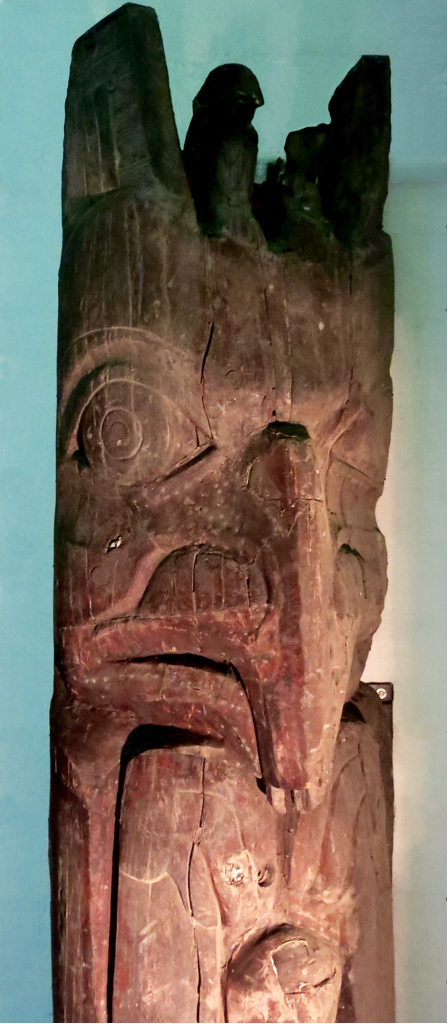In a Tlingit myth, Guteel was a being who lived on human blood. He was larger than humans, and semi-divine, so in English translations of the myth he is referred to as a “giant” or a “monster.” I found a few different versions of the myth — as you’d expect with an oral tradition — but the central plot remains much the same: Guteel is killing too many humans, so the humans figure out a way to kill him. As they destroy him, he prophesies that they will never kill him completely. The humans burn his body, but the ashes turn into mosquitoes which suck blood from humans, thus rendering Guteel’s prophecy true.
At Sitka National Historical Park, there is a Mosquito Legend Pole carved before 1900, which once belonged to Hattie Wallace of the Kaigani Haida village of Sukkwan. Even though it was in a Haida village, the pole shows the Tlingit Mosquito Legend. The traditional Watchman figure is missing from the top of this pole; so now Guteel sits at the top, a giant with a beak that looks like a mosquito proboscis.
We probably would not include monsters or giants like Guteel in the category of deities. Yet a being like Guteel is in some sense a lesser deity: he is immortal, he is powerful, he is part of the order of existence. Not all deities are benevolent.
More information:
Info about the replica Mosquito Legend Pole at Sitka National Historical Park
Versions of the Tlingit Mosquito Legend: a brief version — version with photos of old totem poles

